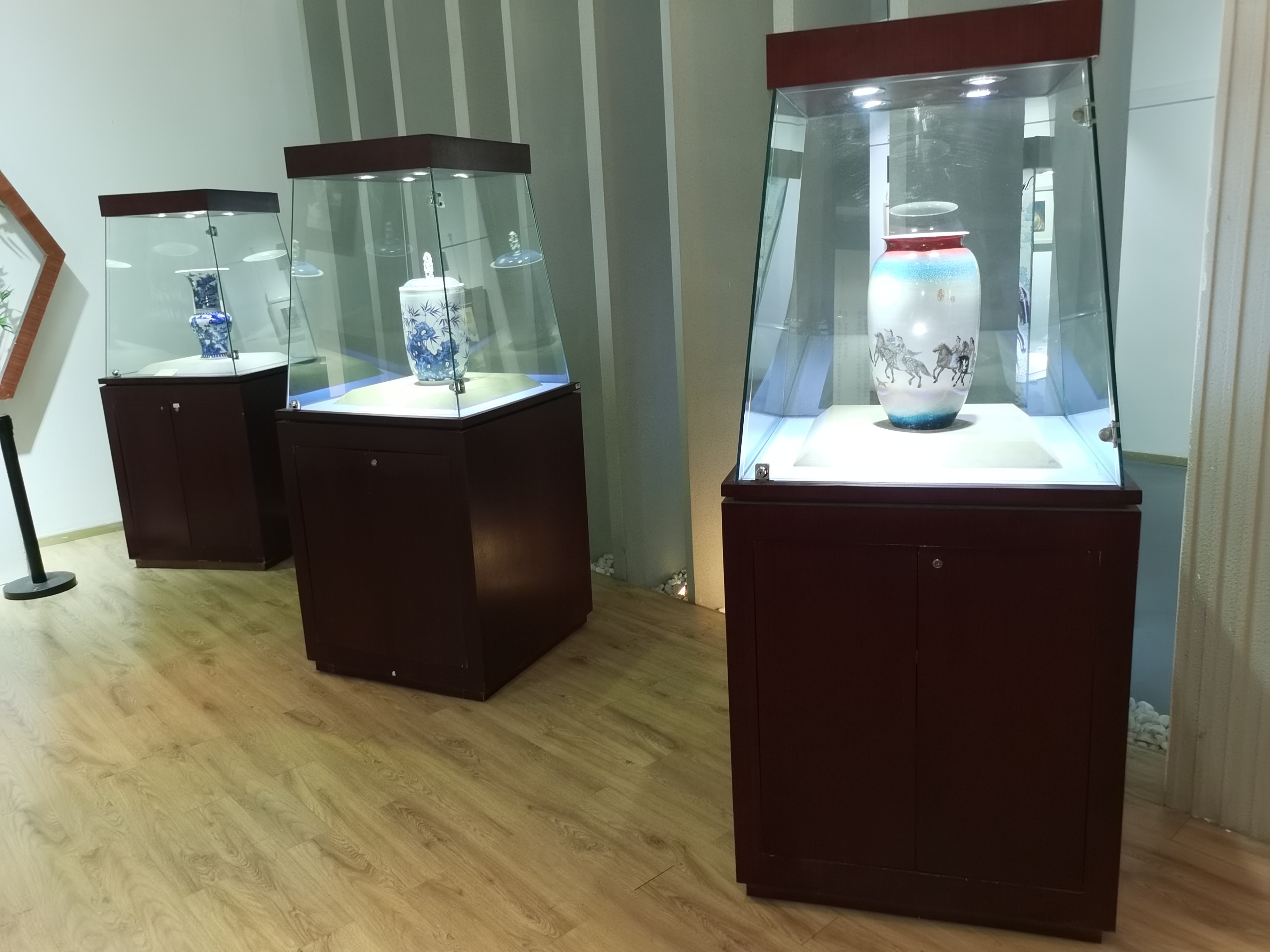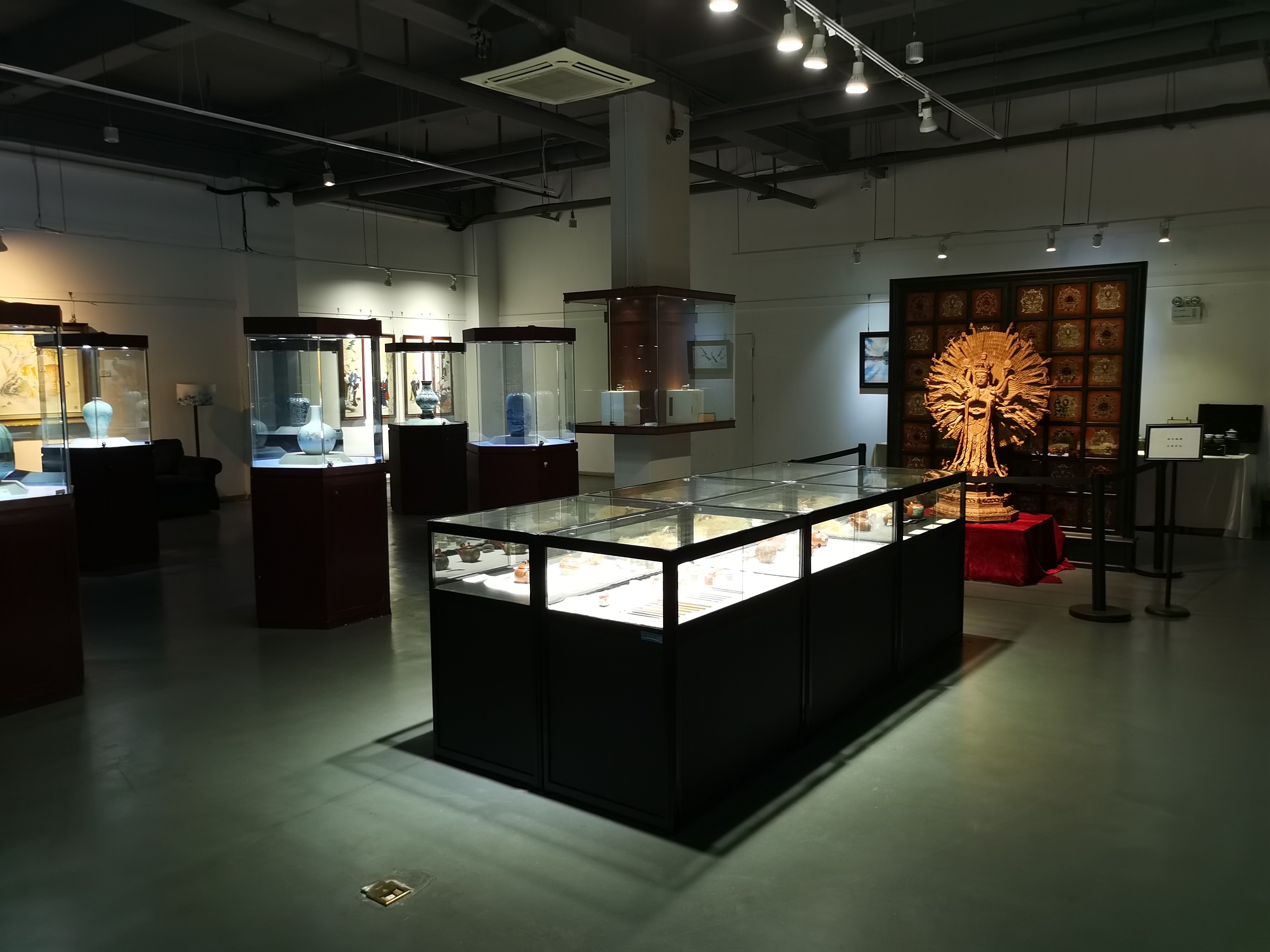Museum display cabinet is not only the guardian of cultural relics, but also the medium of civilized dialogue. In the design of display cabinets, layout and display skills are like precise clock gears, which need not only scientific and rigorous technical support, but also poetic expression of artistic inspiration. From the three dimensions of space narrative, visual language and technical ethics, Huabo Art Exhibition analyses how to maximize the value of cultural relics through the design of exhibition cabinets.
& nbsp; & nbsp; & nbsp; I. Spatial Narrative: Constructing a Multi-dimensional Display Grammar
& nbsp; & nbsp; & nbsp; 1. Logical Weaving
of Thematic Display & nbsp; The layout of the display case should follow a "narrative grammar" that places the artifact in a cultural context. Taking the bronze display cabinet of Shaanxi History Museum as an example, the design team constructed the cognitive map of the social structure of the Western Zhou Dynasty through the linear display of ritual vessels, weapons and living vessels. The core exhibits are placed in the center of the independent cabinet, and the auxiliary exhibits are surrounded by a stepped exhibition stand, forming a "star group". Visual focus, the audience completes the decoding of civilization in changing scenes step by step.
& nbsp; & nbsp; & nbsp; 2. Tension aesthetics
of contrast display& nbsp; & nbsp; & nbsp; 3. Dynamic balance
of spatial scale & nbsp; & nbsp; & nbsp; The height of the display case should be designed to balance ergonomics and heritage characteristics. The dinosaur skeleton display case in the Shanghai Museum of Natural History has a sunken platform, which allows visitors to see the details of the dinosaur cervical vertebra fossils, while the jade display case in the Nanjing Museum has a height of 1.2-1.5 meters, which ensures that children can also enjoy the cultural relics without obstacles.

& nbsp; II. Visual Language: Narrative Rhetoric
of Light, Shadow and Color & nbsp; & nbsp; 1. Narrative encoding
of light & nbsp; Lighting design should be a silent interpreter. The mural display case of the Dunhuang Research Institute uses a 2700K low color temperature light source to simulate the natural light environment of the grottoes; the accent lighting and the ambient light are distributed in a ratio of 3:1, so that the golden decorative patterns of the pleats of the flying apsaras emerge in the dark background. The wall reproduces the original religious ritual sense of the murals.
& nbsp; & nbsp; & nbsp; The background color and cultural relics form a color dialogue. The lacquerware display cabinet in the Suzhou Museum uses a misty acrylic board as the background. Its soft gray tone not only avoids overwhelming, but also sets off the cinnabar red and mother-of-pearl luster on the surface of the lacquerware, creating an oriental aesthetic space like "ink painting".
& nbsp; & nbsp; & nbsp; & nbsp; 3. Poetic expression
of materials & nbsp; The metaphorical value of display case materials cannot be ignored. Jingdezhen Ceramic Museum uses the kiln transformation glazed glass as the display cabinet partition. When the light passes through the glass, the flowing glaze color seems to tell the story of the millennium kiln fire, realizing "Utensil-Space-Memory". A triple dialogue.

& nbsp; III. Ethics of Technology: Dialectical Principle
of Safety and Experience & nbsp; 1. Construction
of dual security system& nbsp; & nbsp; & nbsp; 2. Temperature considerations
for barrier-free design & nbsp; & nbsp; & nbsp; For the visually impaired audience, the display case shall be provided with a tactile guide area. The National Museum of China sets up imitation decorative relief boards beside the bronze tripod display cabinet, and cooperates with the voice guide, so that the audience with different perception modes can get a complete experience.
& nbsp; & nbsp; & nbsp; & nbsp; 3. Future vision
of sustainable design & nbsp; Display cases shall be manufactured from aircraft-grade aluminium profiles and degradable composite materials with zero formaldehyde emissions. The exhibition cabinet of Berlin Museum in Germany integrates photovoltaic power generation film, which absorbs natural light during the day and converts it into electricity, and provides lighting for the exhibition cabinet at night to realize energy self-circulation.
& nbsp; The ultimate mission of museum display cabinets is to free cultural relics from the shackles of time and space and establish a new spiritual contract with the audience. When the display cabinet design is sublimated from a simple container to a narrative carrier, and when the display skills evolve from technical discipline to artistic creation, the museum will truly become a living laboratory of civilized genes. This kind of spiritual dialogue beyond the material level is the most profound humanistic value of display cabinet design.
previous:Huabo Art Exhibition: Museum Display Cabinet Price Truth and Selection Strategy
next:Selection of Door Type for Museum Display Cabinet: Comprehensive Consideration of Automatic Door and